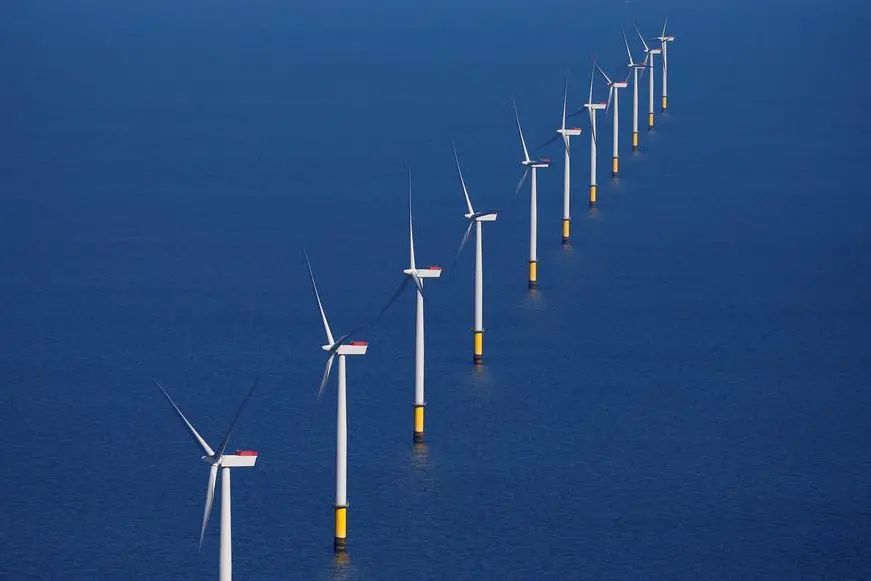PHOTO
FILE PHOTO: General view of the Walney Extension offshore wind farm operated by Orsted off the coast of Blackpool, Britain September 5, 2018. REUTERS/Phil Noble/File Photo Image used for illustrative purpose.
Wind farms have been the primary source of electricity in the United Kingdom for the past two consecutive quarters, marking the longest stretch on record that renewable energy has surpassed fossil fuels in U.K. electricity generation.
Total electricity generation from wind sources during the first three months of 2024 was 25.3 terawatt hours (TWh), compared to 23.6 TWh from all fossil fuel sources, according to data from energy think tank Ember.
Wind power accounted for an average of 39.4% of total electricity during the first quarter of 2024, compared to 36.2% from fossil fuels.
Wind output also exceeded fossil fuel-powered output during the final quarter of 2023, marking the first time that wind power has generated more electricity than fossil fuel plants in the U.K. for consecutive quarters.
When combined with output from solar farms, total electricity output from renewable sources in the U.K. was 27.1 TWh during Q1 2024, the highest quarterly total ever for the U.K. and a record 42.2% share of total electricity generation.
WIND LULL OVER SUMMER
Due to seasonal lulls in wind speeds during the summer, that renewable electricity generation total may start to decline over the coming months.
In 2023, wind generation during the second and third quarters were 46% and 34% lower respectively than during the first quarter, and similar declines in wind generation are possible in 2024 if normal wind speed patterns unfold.
Higher solar output during sunnier periods will offset some of the decline from wind farms, as solar output in the U.K. tends to peak at around 5 TWh during the second quarter of the year, compared to just below 2 TWh during the first quarter.
But as wind farms typically generate roughly six times more electricity than solar farms in the U.K., total renewable generation is still likely to dip notably during the middle of 2024.
Utilities looking to keep fossil fuel use to a minimum during the summer may deploy greater quantities of electricity generated by nuclear reactors, bioenergy facilities and hydro dams to ensure total generation loads remain stable.
Failing that, additional use of natural gas and thermal coal may be needed to ensure power supplies are sufficient to meet demand during summer, which can creep higher due to rising use of power-hungry air conditioners during the hottest periods.
After summer, however, wind speeds tend to pick up again, which should allow wind farms to re-emerge as the main source of electricity supply in the U.K. and help power generators make additional progress towards carbon reduction and energy transition goals.
(Reporting by Gavin Maguire; Editing by Lincoln Feast)























